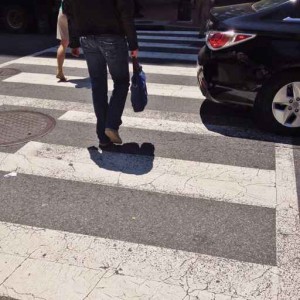Who is at fault in a pedestrian-car accident?

People always remember the old adage “the pedestrian has the right of way”, but that is not always true from a legal standpoint.
If you see someone run across the road in the middle of traffic, your first instinct is to believe it is the pedestrian’s fault. Ultimately in a personal injury case, the jurors or an insurance adjuster make the decision. They look at the stories of both the pedestrian and the driver, applicable laws and findings from the police report.
If the driver is clearly at fault for the accident, the pedestrian can recover compensation from the driver or their insurance carrier for the harm caused.
If the pedestrian is at fault for the accident then they will not be able to recover compensation for any injuries. The driver may also be able to sue the pedestrian for compensation if they harmed the vehicle or the driver.
Below are some common incidents when a pedestrian can be found at fault for an accident with a vehicle.
- Jaywalking or crossing in the middle of the street, outside of a crosswalk
- Crossing against the traffic signal
- Entering a street or highway while intoxicated
- Walking along highways, bridges or roadways where pedestrian access is prohibited
When both the pedestrian and driver are at fault, comparative negligence comes into play.
Comparative negligence is a rule when the injured person shares some of the fault for causing or contributing to the underlying accident. For a true comparative negligence case, an injured person can receive compensation from any other at-fault party but the injured person’s own damage award will be reduced by a percentage that is equal to their share of the fault. The modified comparative negligence rule says that the injured person can collect damages from any other at fault person, as long as the injured person bears less than 50% of the blame for the accident.
 Fewer Cases Better Results
Fewer Cases Better Results 




